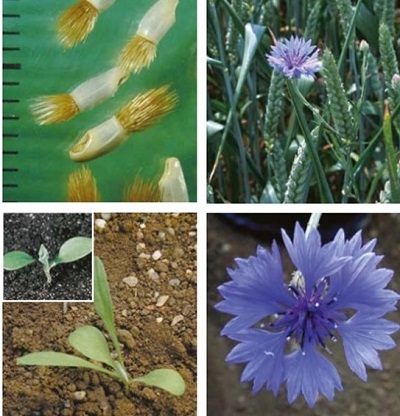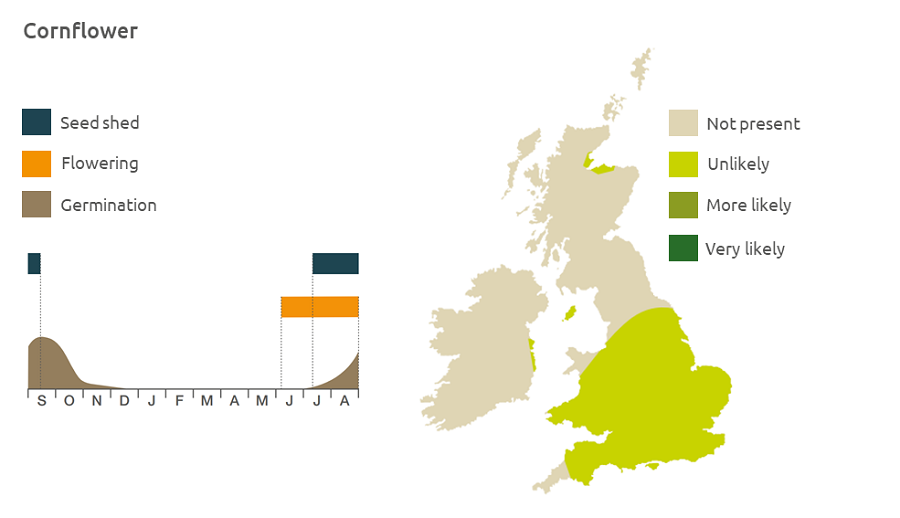- Home
- Knowledge library
- Distribution and biology of cornflower in the UK
Distribution and biology of cornflower in the UK
Cornflower can compete with cereals. Find out how to identify and control this broad-leaved weed.
Overview
Cornflower (Centaurea cyanus) can emerge in autumn- and spring-sown crops and can compete quite well with cereals; in the past it was capable of reducing yields and interfering with harvesting. Autumn-germinating plants overwinter and produce more seeds than spring-germinating plants.
- It has value to biodiversity
Description
It is an annual dicotyledon with upright habit, growing up to 1 m tall. The stem and leaves are covered with woolly hairs and the flowerhead has a ring of usually bright blue flowers.
Key features
Plant: The long thin leaves are covered with woolly hairs.
Flowers: The flowers are bright blue.

Location and life cycle

Geographic distribution
Although cornflower has become rare as a wild plant, it may be found in waste places, roadsides and rubbish tips, often as a garden escapee. It is occasionally found in the north-east of England and Scotland.
Soil type
It grows best in sandy loams and chalky clays.
Seed statistics
- Seed longevity: 1–5 years
- Germination depth: 3 cm
- Seed weight: 4.35 mg
- Seeds/plant: 700–1,600
Management
Use a stale seedbed approach before sowing crops. Harrows will control seedlings but hoeing is required for larger plants. Cornflower is susceptible to the main spring-applied herbicides.
For advice on herbicides, please speak with your agronomist or adviser.
When was this information last updated?
This page is based on content from the encyclopaedia of arable weeds publication. Since it was first released in 2008, the publication has been redesigned several times but not revised. However, it remains a good foundation for general information on the distribution and biology of weeds.

